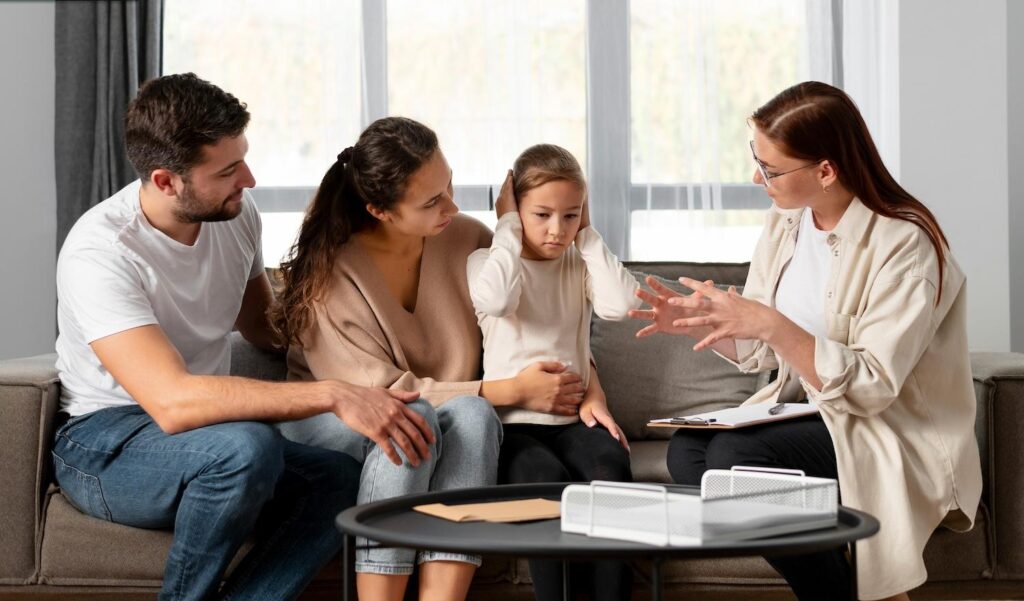This type of psychotherapeutic intervention addresses family problems and dynamics, with the aim of generating positive change, both at the individual and group level.
Suffering is what drives families to seek professional help. “We don’t understand each other,” “we lost a child, we can’t find comfort,” “we are worried about how violence has escalated recently,” are examples that motivate the search for help in family therapy.
Here we delve into this type of psychological intervention. You will surely be interested in knowing in which situations it is appropriate to resort to it and the possible approaches to apply depending on the case. Let’s get started.
What is family therapy?
This is a psychological treatment approach that focuses on the relationships and dynamics within a family. Rather than treating one person in isolation, it looks at the family as an interconnected system, where the problems of one person may influence others and perhaps even share difficulties.
In terms of how it works, it is dynamic. A therapist might convene the entire family for most sessions, work with specific subgroups at other times, and have individual consultations with some members. It is possible that any type of family structure , regardless of its configuration, could benefit from this method.
When is family therapy necessary?
Family psychotherapy is not only for groups with extreme problems. It can be very useful when the dynamics are affected by conflicts that interfere with well-being, unity and harmony. Some common situations that merit this psychological intervention are the following:
- Behavioral problems in children and adolescents .
- Communication problems and persistent conflicts.
- Difficulties or different opinions about raising children.
- Traumatic family events , such as abuse, violence, accidents or illnesses.
- Differences in opinions, values or expectations between generations that create tensions in relationships.
- Significant changes in family structure, such as divorce , death, birth or migration .
It is also a constructive alternative if one or more family members are experiencing mental health issues such as depression, anxiety, eating disorders , addictions or other psychological challenges. By involving the entire family, mutual understanding, collaboration and empathy are fostered.
Systemic family therapy
The systemic approach is one of the most common and widely practiced modalities within the family therapy field. During the sessions, the specialist seeks to create a safe environment where each member feels heard and validated. In this way, open communication and mutual understanding are encouraged.
This is a movement that was nourished by prominent figures such as the biologist Ludwig von Bertalanffy, the cyberneticist Gregory Bateson and the psychologist and communication theorist Paul Watzlawick . Also, the therapist Virginia Satir is recognized for her humanistic approach in family therapy, which transformed intervention practices.
With these foundations, contemporary family therapists are guided by principles such as those detailed below:
- Circular causality: The family is an interconnected system in which the actions of each member affect all the others.
- Individual symptoms, group roots: Individual problems can be manifestations of a dysfunctional family .
- Contextualization: The cultural and social context in which the family is immersed is essential when addressing problems and seeking solutions.
- Holistic vision : the emotional and psychological well-being of each member is influenced by the dynamics of the family system as a whole .
Specific techniques of the systemic approach include circular questions , which seek to reveal conflicts, perceptions, and emotions to better understand interactions. For example, “What do you think your child feels when you and his brother argue?” Or, instead of asking “Why are you angry with your brother?”, ask “How do you think your brother feels when you ignore him?”
Other common practices include genograms , family sculptures , and miracle questions . These tools help explore family dynamics, identify interactional patterns, and promote positive change.
Other types of family therapy
Within this field, there are different approaches and methods of application, each with specific theoretical bases. However, they all recognize the importance of relationships between family members and how these impact individual and collective well-being.
1. Structural family therapy
Its developer is the Argentine psychiatrist Salvador Minuchin . It focuses on the organization and structure of the family, investigating roles, distribution of power and boundaries and alliances. The therapist intervenes in a directive way to reorganize dysfunctional dynamics and strengthen the structure.
2. Psychodynamic therapy for the family
Inspired by individual psychodynamic therapy , it explores underlying family conflicts and dynamics, often related to past experiences. It seeks to increase awareness of these unconscious processes in order to generate change.
3. Cognitive-behavioral family therapy
The focus of this approach is to recognize and modify the patterns of thinking and acting that cause problems within the family. To do this, specific techniques are used, such as communication skills training and cognitive restructuring , which aim to change dysfunctional thinking patterns.
4. TFCE
Emotionally focused family therapy ( EFFT) specializes in exploring and healing the emotional wounds that underlie problems in the group. It works with feelings, anxieties, empathy and attachment styles to rebuild bonds and regain lost peace.
5. Strategic structural therapy
According to Jay Haley, one of the leading proponents of strategic therapy , symptoms are a dysfunctional way of communicating something. Therefore, this method focuses on helping families identify symptoms and promote changes in behavior and communication patterns.
A tool for change
Family-oriented therapy is a dynamic and transformative process that challenges ingrained dysfunctional patterns and encourages the adoption of new ways of thinking, acting and relating.
With the expert guidance of a therapist, families gain skills to communicate more effectively, resolve conflicts without resorting to violence, accept differences, and face difficult times with resilience. If you think your family needs it, don’t hesitate to give it a try.


